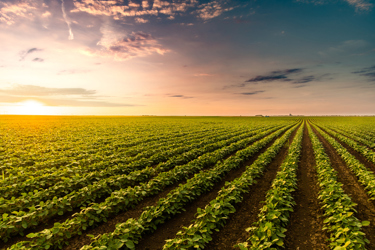7 Photonics Technologies Transforming Modern Agriculture

By Emily Newton

Agriculturalists and scientists alike know how important light is to success. It is why photonics experts are experimenting with new ways to enhance food production with technology. Incorporating novel equipment could address industry problems such as soil quality, changing growth cycles, and water scarcity. What are the best examples of game-changing photonics in agriculture?
1. Hyperspectral Imaging
Imaging technologies already execute quality captures across electromagnetic spectra. However, professionals can make it better at identifying details like soil chemical compositions and a plant’s visual changes. Hyperspectral applications include:
- Determining water stress levels for more precise irrigation
- Detecting diseases based on visual cues that are hard to identify with manual inspections
- Identifying nutrient deficiencies to administer targeted fertilizer solutions
- Estimating yields based on visual developments
Studies also revealed that accurate calibrations for hyperspectral imaging obtained a 92.2% effectiveness when line-scanning crops for temperature sensitivity. Insights like this boost awareness of environmental control.
2. Light Detection and Ranging (LiDAR)
LiDAR is revolutionizing how farmers survey their lands. It can create 3D maps of crops and ranches for better oversight and asset tracking. Over time, staff can see topographic shifts to make lake management and drainage easier to curate from season to season, especially if it has endured intense weather.
Detection technologies are also powerful for seeing gradual crop height and spread changes. It will be easier to manage orchards because it shows where pruning would benefit spacing. Biomass production insights are another benefit, because lidar can visualize the effectiveness of grassland management and photosynthetic processes.
3. LED Lighting
LED is sustainable and potent for assisting plant development. They are ideal in greenhouses and indoor vertical hydroponics. Photonics in agriculture could be the reason farmers expand into these environments. LEDs support optimal plant growth, as many come equipped with sensors to adjust intensity based on the species. They are also energy-efficient, cutting annual consumption and extending growing seasons when daylight is less plentiful.
4. Optical Sensors For Soil Analysis
From nutrient monitoring to moisture, optical sensors are invaluable assets to farmers. Some characteristics are visible to the naked eye, but many require deeper chemistry and soil science knowledge that some farmers may not have. Technology enables higher literacy in these subjects, teaching organizations more about what is supporting their crops, trees, and animals.
Real-time analysis is the greatest advantage of sensor-based technologies. They can run constant soil tests to identify phosphorus levels, water permeation, carbon sequestration, and countless other metrics. Research shows these machines can be 100% effective using colorimetry within sensors.
5. Agrivoltaics
Photonics in agriculture must leverage solar panels to help fields flourish. Agrivoltaics improves environmental conditions for plants and pollinators by shielding vulnerable crops from direct ultraviolet exposure. The panels still allow sun access while generating clean power to support other operations.
Tactful use of abrasives can boost the photonic efficacy of solar panels. For example, silicon carbide has a nearly comparable strength to diamonds, and it is essential for making mounting equipment rigid and resistant to the elements.
Industry experts can make these arrays more effective by amplifying mechanics in concentrator photovoltaics. Enhancing shade management functions and spectral distribution are essential for advancing the field and improving output.
6. Spectroscopy For Quality Assessment
Spectroscopy methods, like near-infrared and Raman techniques, can look at unpicked and harvested crops and assess them for quality. They can identify concerns related to many characteristics. These lights could observe fruit ripeness to determine the best time to pick. After harvesting, spectroscopy could reveal if prominent contaminants are present and if additional sanitation is necessary.
It could also automate grading and sorting operations. Farmers could program cameras with specific prerequisites, informing their assessments. The traits could include acidity, color, size, sugar content, and more. Then, machinery can place products in the correct locations based on the quality parameters.
7. Laser Weed And Leveling Control
Some photonics applications are more aggressive, like with laser-induced breakdown spectroscopy. It can target areas with high weed density, carefully removing excessive and detrimental plants. Farmers could automate these controls, as cameras could constantly survey areas and initiate selective weeding after the issue reaches a certain level.
The assistance will prevent overcrowding in the fields while supporting healthier growth cycles. Eliminating outcompeting species is essential for ensuring the stability of the yield.
It also empowers businesses to reduce herbicide use, as lasers do not use chemical supplements. It makes soil, water, and plant control more organic-compliant and eco-friendly. Eventually, some plants could become herbicide-resistant, and overcoming reliance on these products prevents this side effect from occurring.
Lasers also can level land with precision. Combining this with the benefits of weed control, farms can obtain up to 30% water savings and boost yields between 5%-30%.
The Benefits Of Photonics In Agriculture
Photonics experts have worked for years to optimize light-based technologies for farmers. Agriculture has moved into an era where it is not subject to nature. Industry professionals can create the perfect environment for crop health, profitability, and sustainability by implementing some of these innovations into their workflows.
